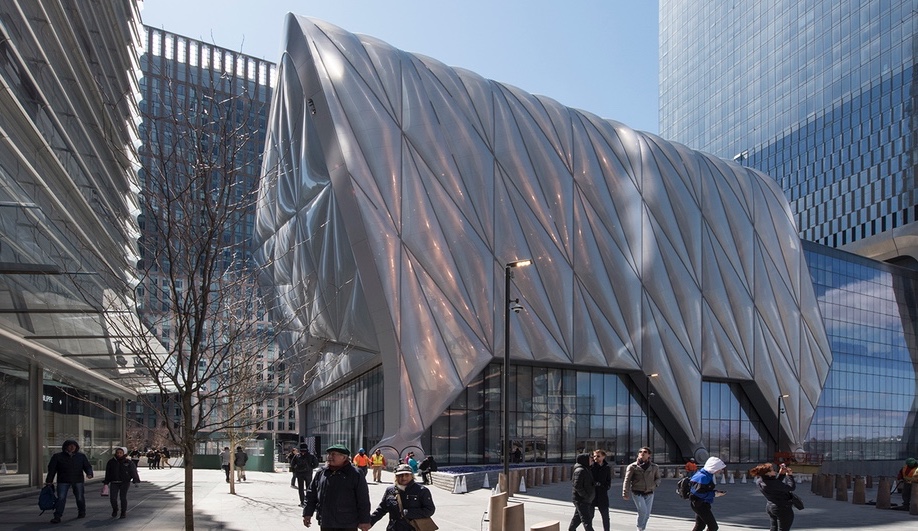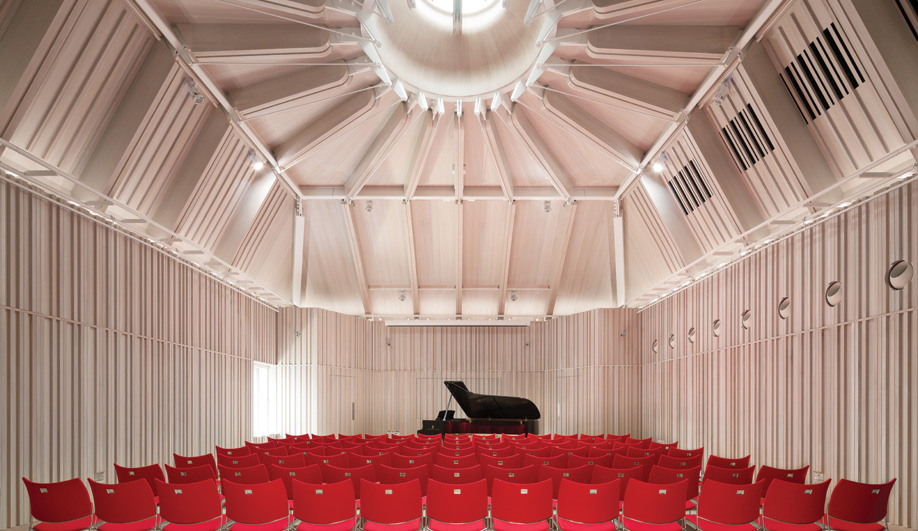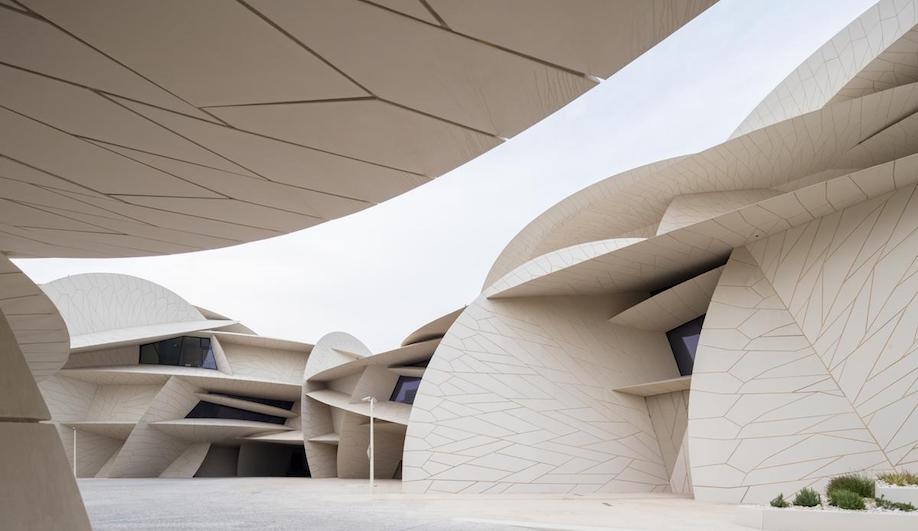
A barnlike public library, by MVRDV, breathes new life into a dreary Rotterdam suburb.
Take a walk through Spijkenisse, a working-class suburb in the port lands of Rotterdam, and you’ll receive a history lesson in failed urban planning. But local citizens are battling the dreariness conveyed by its constellation of modernist slabs and low-rise row houses. Descended from a long line of dockworkers, they have rolled up their sleeves and founded their own political party, Our Spijkenisse, focused on realizing projects that will improve the image and experience of the area.
Their most recent project, Book Mountain, wonderfully exemplifies what the future could look like. Intended as a focal point for a revamped city centre, the newly completed public library began as an open brief to create 9,300 square metres for stacks and other functions, and has debuted as a brave architectural spectacle. It was designed by MVRDV, the Rotterdam firm known for creating buildings based on strong, singular ideas. In the initial client meeting, partner Winy Maas stacked a pile of books on the table and said, “Here’s your library.” This monument made of volumes then became the driving force behind the design, a ziggurat of bookshelves encased in a barn-shaped glass house. With the stacks facing outward, every title – 70,000 in total – is put on display for the outside world. From the public square, the effect is stunning: you can peer through the glass facade to people climbing up to the mountain’s pinnacle.
To emphasize the public quality, the architects brought into the building the same brick used to pave the square. The lighting and the garbage receptacles resemble street furniture; even the black bookshelves, which laid in line would run more than three kilometres, are made of a recycled plastic derived from plant pots used in the region. The architecture also makes several nods to the country’s agricultural vernacular. The glass house, a strong presence in the Dutch countryside, is propped up by a modern take on the timber framing used in local barns. The massive, slender beams act like vertical louvres, creating a sense of enclosure in an otherwise exposed structure.
The real triumph lies in how MVRDV has transformed a modest brief into a grand statement. By cleverly rearranging the library’s contents and displaying them in an innovative way, the architects have erected a monument to a small town eagerly seeking one.




